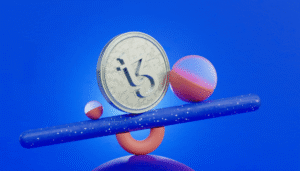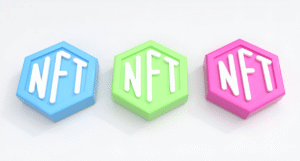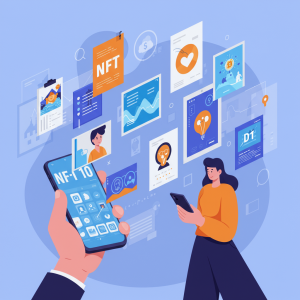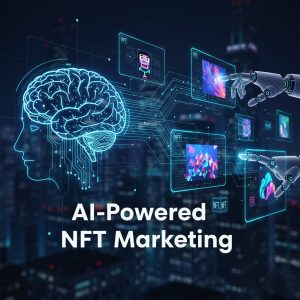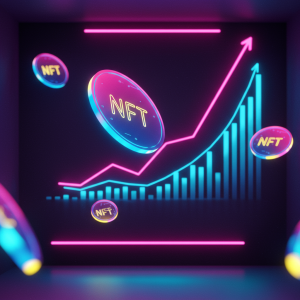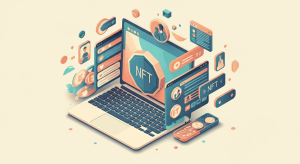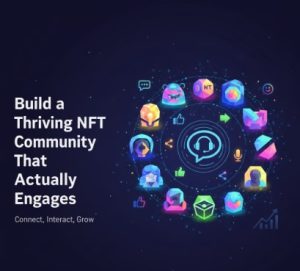What Is an NFT for Dummies: A Beginner’s Guide to Digital Ownership

If you’ve heard the term “NFT” thrown around but find yourself confused about what exactly these digital assets are and why people pay millions for them, you’re not alone. The world of NFTs can seem complex and inaccessible at first glance, but the core concepts are actually quite straightforward once broken down. This guide will walk you through everything you need to know about NFTs without overwhelming you with technical jargon.
The Basics: What Is an NFT?
NFT stands for “non-fungible token.” While that might sound complicated, the concept is simpler than it appears. Something that is “fungible” can be exchanged on a one-to-one basis with an identical item. A dollar bill is fungible because any dollar bill can be swapped for another and you’ll have exactly the same thing.
Non-fungible means the opposite—each item is unique and cannot be directly exchanged for something else of equal value. Think of baseball cards, rare coins, or original paintings. Each has distinct characteristics that make them unique.
An NFT is simply a digital certificate of ownership for a unique item, typically digital content like artwork, music, videos, or even tweets. This certificate exists on a blockchain—a digital ledger that records transactions in a way that’s extremely difficult to alter or hack.
How NFTs Work
When someone creates (or “mints”) an NFT, they’re essentially creating a digital token that represents ownership of a specific item. This token contains information like who created it, when it was created, who owns it now, and other details that verify its authenticity.
The blockchain technology—most commonly Ethereum—ensures that this ownership record cannot be tampered with. Even if someone copies the digital file itself (like saving an image of digital artwork), they don’t own the original NFT. Think of it like having a poster print of the Mona Lisa versus owning the actual painting in the Louvre.
When NFTs are bought and sold, the blockchain records these transactions, creating a verifiable history of ownership that anyone can see. This transparency helps establish provenance—the historical record of an item’s origin and ownership—which has traditionally been crucial in art and collectibles markets.
Why Would Anyone Buy an NFT?
The reasons people purchase NFTs vary widely. Some common motivations include:
For collectors, NFTs represent a new frontier in collecting. Just as some people collect physical art, stamps, or trading cards, digital collectors acquire NFTs for their rarity, aesthetic value, or cultural significance.
Many see NFTs as investments, believing their value will appreciate over time. Early buyers of now-popular collections like CryptoPunks or Bored Ape Yacht Club have seen dramatic returns on their initial purchases.
Supporting artists directly has become another important motivation. NFTs allow creators to sell their work directly to fans without intermediaries taking large cuts of the profits. Artists can also program royalties into their NFTs, ensuring they receive a percentage of sales whenever their work changes hands in the future.
Exclusive access or membership often comes with NFT ownership. Some NFTs function as membership passes to online communities, exclusive events, or special content—creating value beyond the digital token itself.
Popular Types of NFTs
Digital art remains the most recognized category of NFTs. From simple pixel art to complex digital paintings, artists have embraced the medium to sell their work directly to collectors.
Profile pictures collections like CryptoPunks and Bored Ape Yacht Club have become status symbols in certain online communities. Owners often display these as their social media avatars, showcasing their membership in exclusive digital communities.
Virtual real estate has emerged as another significant NFT category. In virtual worlds like Decentraland and The Sandbox, people buy digital land parcels as NFTs, sometimes paying hundreds of thousands of dollars for prime locations.
Music and videos are increasingly tokenized as NFTs, allowing creators to sell limited edition digital releases directly to fans.
Gaming assets represent another growing segment, with in-game items, characters, and abilities being sold as NFTs that players truly own and can often use across different games or platforms.
How to Buy and Sell NFTs
If you’re interested in purchasing NFTs, the process typically involves several steps:
First, you’ll need a digital wallet that can store both cryptocurrency and NFTs. MetaMask is one of the most popular options for beginners.
Next, you’ll need to purchase cryptocurrency—typically Ethereum—as most NFTs are bought using this digital currency. You can buy Ethereum through exchanges like Coinbase, Binance, or Kraken.
Once you have your wallet set up and funded, you can connect it to an NFT marketplace. OpenSea, Rarible, and Foundation are among the most popular platforms where you can browse and purchase NFTs. For comprehensive guides and market analysis to help you make informed decisions, visit NFT Marketo, where we provide resources for both beginners and experienced collectors.
The actual purchasing process involves selecting an NFT you’re interested in, making an offer or paying the listed price, and confirming the transaction. The blockchain will process this transaction, transferring ownership of the NFT to your wallet.
Selling works similarly—you can list NFTs you own on marketplaces, set a price or allow for auctions, and wait for buyers. When someone purchases your NFT, the marketplace facilitates the transfer of ownership and payment.
Potential Drawbacks and Risks
Environmental concerns have been raised about certain NFTs due to the energy consumption of some blockchain networks. However, many platforms are transitioning to more energy-efficient methods.
Market volatility presents another risk, as NFT valuations can fluctuate dramatically. A token worth thousands one month might be worth significantly less later, similar to traditional art markets but often with greater volatility.
Scams and fraud exist in the NFT space. Always research thoroughly before purchasing, especially checking the authenticity of the creator and the project.
Legal questions remain around copyright and ownership rights, as the laws governing digital assets continue to evolve.
The Future of NFTs
While some dismiss NFTs as a passing fad, others see them as the foundation of digital ownership in an increasingly virtual world. The technology continues to evolve, with potential applications expanding beyond art and collectibles.
Many believe NFTs will become integral to how we establish and transfer ownership of both digital and physical assets in the future. Smart contracts (self-executing contracts with the terms directly written into code) could automate royalty payments, verify authenticity, and facilitate complex ownership arrangements.
The metaverse concept—interconnected virtual worlds where people interact, work, and play—relies heavily on NFTs to establish ownership of digital items, identities, and spaces.
Getting Started with NFTs
If you’re curious about NFTs but not ready to make significant investments, consider these beginner steps:
Explore NFT marketplaces without purchasing first. Browse platforms like OpenSea to understand what types of NFTs exist and their price ranges.
Follow NFT creators on social media to learn about upcoming projects and understand the communities forming around different collections.
Start small with lower-priced NFTs if you decide to purchase. Many interesting projects offer more affordable options that let you experience ownership without significant financial risk.
Remember that while some NFTs have sold for millions, most are much more modestly priced, and many interesting projects are accessible to average buyers.
Conclusion
NFTs represent a fundamental shift in how we think about digital ownership. By creating scarcity and verifiable ownership for digital items, they’ve opened new possibilities for creators, collectors, and investors alike.
Whether you see them as the future of ownership or simply an interesting technological development, understanding NFTs provides insight into how blockchain technology is changing our relationship with digital content.
As with any new technology or investment opportunity, approach NFTs with both curiosity and caution. The space continues to evolve rapidly, presenting both exciting possibilities and potential pitfalls for newcomers.

